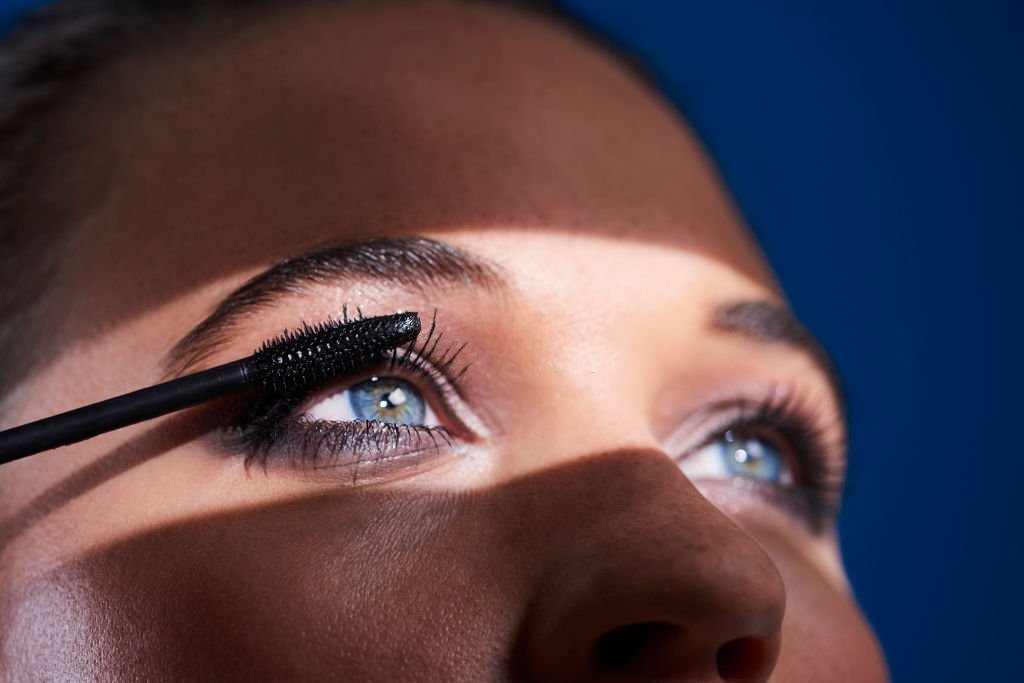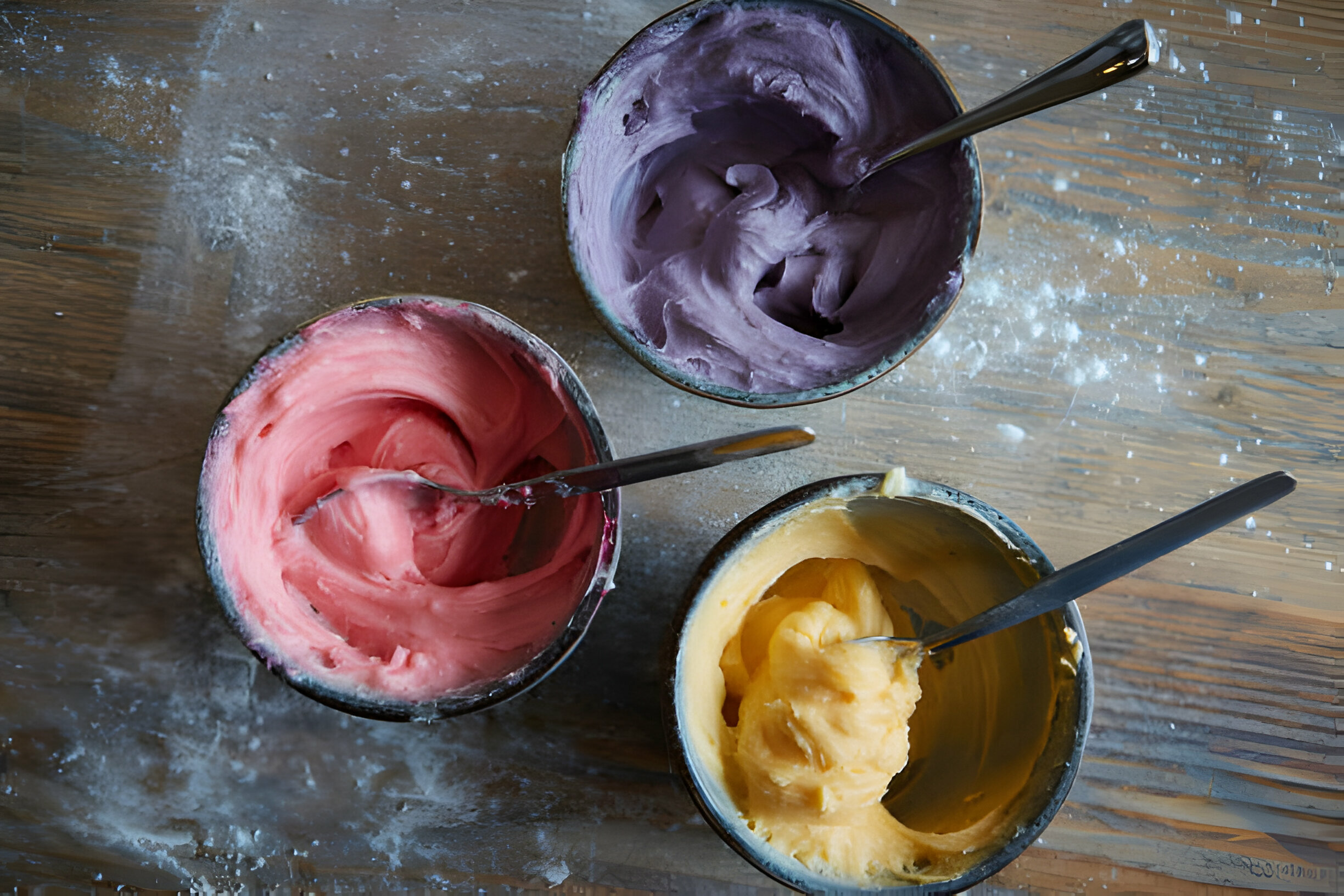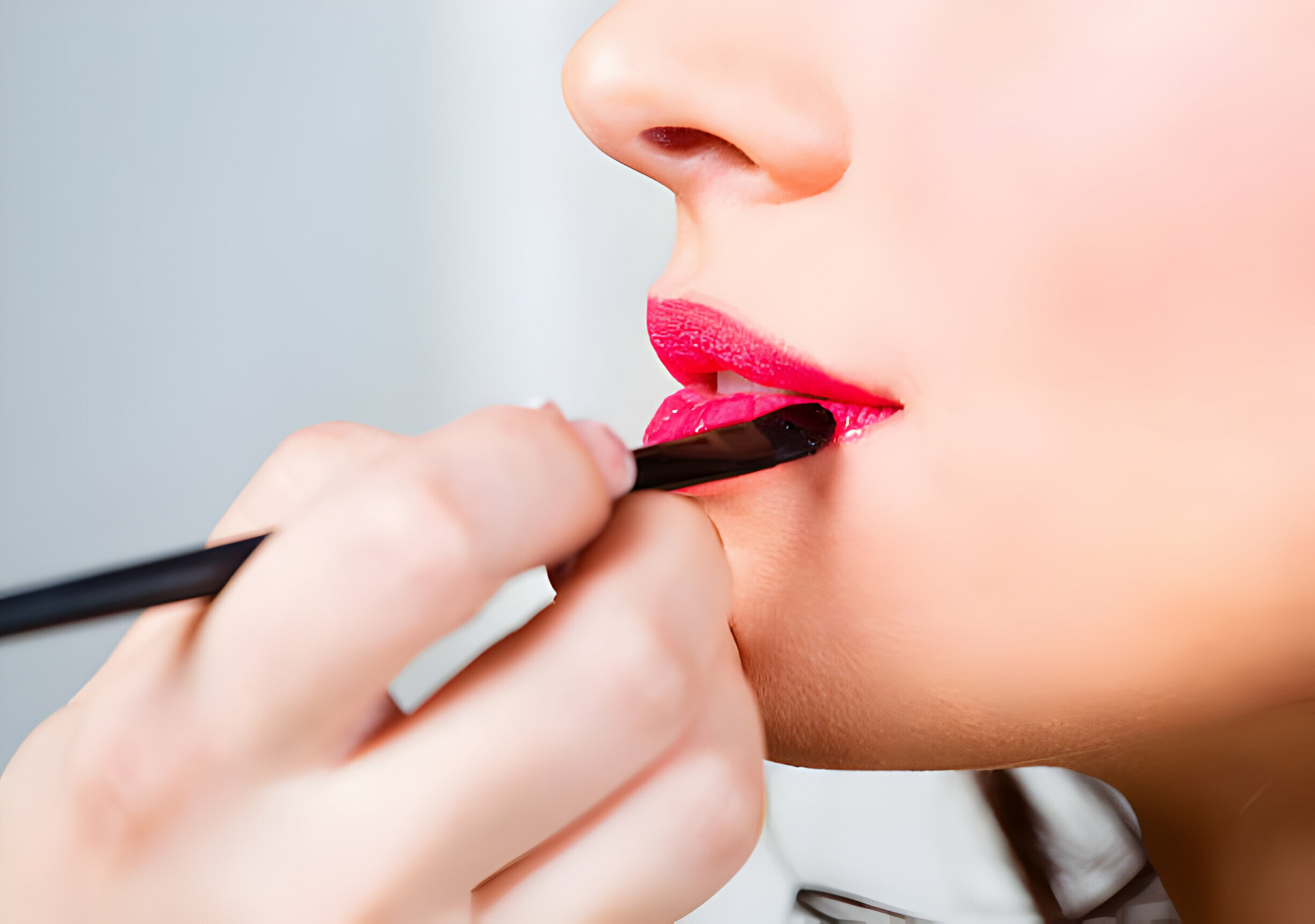Why Does My Makeup Look Dry? – Dry Makeup No More
Many makeup enthusiasts have experienced the frustration of applying makeup only to have it look dry and lackluster on their skin. The appearance of dry makeup can diminish the overall effect, making the face appear dull and aged. Understanding the reasons behind this issue is crucial to achieving a flawless and hydrated makeup look. Factors such as skin type and condition, skincare routine and hydration, and product formulation and ingredients significantly determine how makeup appears on the skin. This article Why Does My Makeup Look Dry will explore these factors and provide valuable insights and tips to help you combat dry-looking makeup and achieve a radiant complexion.
Skin Type and Condition
Different skin types and their tendencies to appear dry with makeup:
- Dry skin: Dry skin lacks natural moisture and tends to feel tight and rough. When makeup is applied to dry skin, it can accentuate flakiness and make the skin look dehydrated and dull.
- Combination skin: Combination skin exhibits both dry and oily areas. While certain parts of the face may appear dry, such as the cheeks, other places like the T-zone (forehead, nose, and chin) may have excess oil. Makeup on combination skin can highlight dry patches while appearing shiny or greasy in oilier areas.
- Dehydrated skin: Dehydrated skin lacks water content, leading to a compromised moisture barrier. Even oily skin types can experience dehydration. Makeup on dry skin can settle into fine lines and emphasize dryness, giving an overall dull and lackluster appearance.
How Each Skin Type Requires Specific Approaches To Prevent Dryness
- Hydration and moisturization for dry skin: Dry skin types benefit from a skincare routine focusing on intense hydration and moisturization. Hydrating serums, moisturizers, and facial oils can help restore moisture and create a more supple canvas for makeup application.
- Balancing moisture levels for combination skin: Combination skin requires a balanced approach, where dry areas receive ample hydration while oilier areas are controlled with lightweight, non-comedogenic moisturizers. Tailoring skincare products to target specific regions helps maintain a harmonious balance for makeup application.
- Restoring moisture barrier for dehydrated skin: Dehydrated skin needs replenishment of moisture and restoration of the skin’s protective barrier. Incorporating hydrating toners, sheet masks, and hyaluronic acid-based products can help improve hydration levels and create a smoother base for makeup.
Makeup Products for Dry Skin
Makeup products for dry skin are designed to moisturize, nourish, and protect the skin from environmental factors that can cause dryness, flakiness, and irritation. Some common ingredients in these products are hyaluronic acid, glycerin, ceramides, shea butter, aloe vera, and antioxidants. These ingredients help to retain moisture, restore the skin barrier, soothe inflammation, and prevent free radical damage.
Some examples of makeup products for dry skin are:
- Primer: A primer is a base layer that prepares the skin for makeup application. It can smooth out the texture, fill in the pores and fine lines, and create a more even canvas. A primer for dry skin should be hydrating and lightweight, such as the Smashbox Photo Finish Hydrating Foundation Primer or the e.l.f. Cosmetics Hydrating Face Primer.
- Foundation: A foundation is a product that covers the skin tone and imperfections and provides a desired level of coverage and finish. A foundation for dry skin should be creamy or liquid and have a dewy or satin finish. It should also have SPF to protect the skin from sun damage. Some examples are the L’Oreal Paris Infallible Pro-Glow Foundation or the Maybelline Fit Me Dewy + Smooth Foundation.
- Concealer: A concealer is a product that hides specific blemishes, such as dark circles, acne scars, redness, or hyperpigmentation. A concealer for dry skin should be moisturizing and blendable and match the skin tone or be slightly lighter. To avoid creasing, it should also be applied sparingly and set with a light powder. Some examples are the NARS Radiant Creamy Concealer or the NYX Professional Makeup HD Photogenic Concealer.
- Blush: A blush is a product that adds color and warmth to the cheeks and enhances the complexion. A blush for dry skin should be cream or liquid and have a sheer or buildable pigmentation. It should also be applied with a sponge or fingers to avoid streaking or patchiness. Some examples are the Glossier Cloud Paint or the Milani Cheek Kiss Liquid Blush.
- Highlighter: A highlighter is a product that adds glow and luminosity to the high points of the face, such as the cheekbones, brow bones, nose bridge, and cupid’s bow. A highlighter for dry skin should be cream or liquid and have a subtle or intense shimmer. It should also be applied with a sponge or fingers to blend seamlessly with the skin. Some examples are the Becca Shimmering Skin Perfector Liquid Highlighter or the Wet n Wild MegaGlo Liquid Highlighter.
Why Does My Makeup Look Dry?

There are several reasons why your makeup may appear dry on your skin. One possible factor is your skin type and condition. If you have dry skin, which naturally lacks moisture, it can make your makeup look dry and flaky. Similarly, combination skin with dry areas can experience the same issue, with dry patches appearing more pronounced. Dehydrated skin, regardless of skin type, lacks water content and can result in a compromised moisture barrier, making makeup settle into fine lines and accentuating dryness.
Another reason could be an inadequate skincare routine and hydration. Insufficient moisturization and failure to prep the skin properly before makeup application can contribute to dry-looking makeup. Lastly, the formulation and ingredients of your makeup products play a significant role. Matte or long-wearing formulations and products containing drying ingredients, like alcohol, can further contribute to a dry appearance. Understanding these factors will help you identify the underlying causes and take appropriate steps to achieve a more hydrated and flawless makeup look.
How To Fix Your Dry-Looking Makeup
Step 1: Start with a Skincare Routine
Achieving a flawless makeup look starts with a solid skincare routine. Properly hydrated and nourished skin provides a smooth canvas for makeup application, helping to avoid a dry and patchy appearance. Begin by cleansing your face with a gentle cleanser suitable for your skin type. Follow it up with a hydrating toner to further prepare your skin.
Next, moisturize your face with a rich, hydrating moisturizer. Look for one that contains ingredients like hyaluronic acid or glycerin, known for their ability to retain moisture. Massage the moisturizer into your skin, focusing on any dry areas. This step helps to replenish the moisture levels in your skin, preventing your makeup from looking dry.
Step 2: Choose Hydrating Makeup Products
When it comes to makeup products, opt for formulas that provide hydration and luminosity. Avoid matte or drying formulas, as they can exacerbate the dryness and dull your makeup. Look for foundations, concealers, and powders with moisturizing properties or are labeled hydrating.
Additionally, consider using a hydrating primer before applying your makeup. This step creates a smooth base, allowing the products to adhere better to your skin. Look for primers containing aloe vera or glycerin to lock in moisture.
Step 3: Apply Makeup with Damp Tools
How you apply your makeup can also affect its appearance on your skin. Instead of using your fingers or dry brushes, use damp tools like a makeup sponge or a dampened brush. The moisture in these tools helps to blend the products seamlessly into your skin, preventing them from settling into dry patches.
Start by dampening your makeup sponge or brush with water. Squeeze out any excess moisture, leaving it slightly damp. Dab your sponge into your foundation or concealer and gently press it onto your skin, using a bouncing motion. This technique helps to deposit the product evenly while maintaining hydration.
Step 4: Set and Refresh with Hydrating Sprays
After applying your makeup, set it with a hydrating setting spray. Setting sprays not only helps to prolong the wear of your makeup but also provides an additional boost of hydration. Look for setting sprays that contain ingredients like rosewater or glycerin.
Hold the setting spray about an arm’s length away from your face and mist it evenly across your skin. Allow it to dry naturally without touching or rubbing your face. This step helps to lock in your makeup and give it a natural, glowing finish.
Carry a facial mist or hydrating spray throughout the day if your makeup starts to look dry or dull. Spritz your face lightly, holding the bottle about 8-10 inches away, to refresh your makeup and add a burst of hydration.
Step 5: Practice Proper Touch-ups
When touching up your makeup, it’s important to avoid piling on more products, which can contribute to a dry appearance. Instead, keep it minimal and focus on areas that need attention. For example, if your under-eye area looks dry, gently pat a small amount of concealer with your finger, focusing on the affected area.
Before touching your powder, blot any excess oil with a tissue or oil-absorbing sheet. Then, using a fluffy brush, lightly dust only a small amount of powder where necessary, such as the T-zone. Avoid applying powder on dry areas, as it can emphasize the dryness.
Remember, less is more when it comes to touch-ups. It’s better to maintain a natural and hydrated look by adding small amounts of product as needed.
Best Tips To Avoid Your Makeup Looking Dry Next Time
- Start with skincare: A solid skincare routine is the foundation for healthy-looking skin and flawless makeup. Cleanse your face with a gentle cleanser to remove impurities, followed by exfoliation to slough off dead skin cells. Finish with a hydrating moisturizer suited for your skin type to nourish and prepare your skin for makeup.
- Hydrating primer: A hydrating primer acts as a barrier between your skin and makeup, helping to lock in moisture and create a smooth base. Look for primers that contain ingredients like glycerin or hyaluronic acid, which provide hydration and plumpness to the skin. Apply a small amount evenly onto your face after moisturizing.
- Moisturize before makeup: Apply a lightweight, non-greasy moisturizer suited for your skin type before starting your makeup application. This step is crucial to keep your skin hydrated throughout the day. Take a pea-sized amount and gently massage it into your skin, allowing it to fully absorb before moving on to the next step.
- Avoid matte formulas: Matte makeup products tend to accentuate dryness and can make your skin look dull. Opt for foundations, concealers, and powders with a dewy or luminous finish for a more hydrated and radiant look. Look for products labeled as hydrating or luminous, which contain ingredients like oils or light-reflecting particles.
- Use a damp makeup sponge: Instead of using brushes for foundation application, try a damp makeup sponge. Wet the sponge and squeeze out excess water before dipping it into your foundation. The damp sponge helps to add moisture to your skin and blend the foundation seamlessly for a natural, hydrated finish.
- Avoid excessive powdering: While setting powder can help control shine, too much can make your skin appear dry and cakey. Focus on powdering only the areas that tend to get oily, such as the T-zone, and use a light hand. Alternatively, you can opt for a translucent setting powder or a hydrating setting spray to set your makeup without drying your skin.
- Hydrating setting spray: After completing your makeup, finish it with a hydrating setting spray. This will help lock in your makeup and add a subtle glow to your skin. Look for setting sprays that contain ingredients like glycerin or soothing botanical extracts to provide an extra boost of hydration.
- Regularly touch up with a facial mist: Throughout the day, refresh your makeup and add moisture by spritzing a facial mist onto your face. Facial mists contain hydrating ingredients that can help revive your makeup and prevent it from looking dry or dull. Carry a travel-sized mist in your bag for quick touch-ups on the go.
FAQs
Why Does My Makeup Not Look Like Skin?
Your makeup may look different from your skin due to mismatched foundation shade, improper blending, or excessive use of heavy products.
How Do You Fix Cakey Makeup After Applying It?
To fix cakey makeup after applying, lightly mist your face with a hydrating facial spray and gently press the makeup with a damp sponge or beauty blender to blend and revive the finish.
Why Does My Makeup Look Patchy?
Your makeup may look patchy due to uneven application, using incompatible products, or not correctly blending the makeup.
What Foundation Does Not Sit In Wrinkles?
A lightweight and hydrating foundation with a satin or dewy finish is less likely to settle into wrinkles, providing a smoother and more youthful appearance.
Do You Put Concealer Or Foundation First?
Applying foundation and concealer for a more seamless and natural-looking finish is generally recommended.
Should You Let Moisturizer Dry Before Applying Foundation?
Letting your moisturizer absorb into the skin for a few minutes before applying foundation is generally recommended to ensure better blending and adherence.
Conclusion
Understanding why makeup may appear dry is crucial for a hydrated and flawless appearance. Prioritize skincare, hydration, and appropriate product formulations. Applying effective techniques and considering skin type and condition can help overcome dryness and achieve a radiant complexion. With the proper knowledge and practice, you can perform a beautiful, moisturized finish that lasts throughout the day.
Jillian Ruffo
As a Beauty Care and Wellness Writer, of liveandfeel I focus on the holistic concept of wellness, encompassing mental, physical, and emotional health. I create engaging content that informs and empowers readers to prioritize self-care. My content celebrates diverse definitions of beauty and encourages self-love. I explore natural ingredients, cutting-edge beauty technologies, and mindfulness practices, fostering a sense of well-rounded well-being. My goal is to inspire readers to prioritize self-care and discover the latest trends in beauty.








